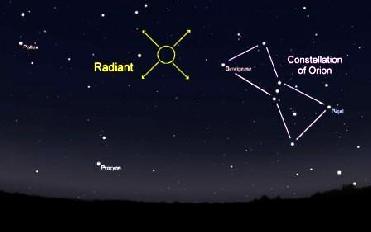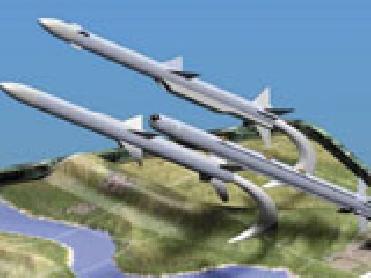
© Stellarium image showing Orionid radiant. A File Photo.
A meteor shower is a celestial event in which a number of meteors are observed to radiate from one point in the night sky. Meteor showers are times when you can see many meteors or "shooting stars" in one night. There are several meteor showers each year.
Orionid
The Orionid meteor shower is produced by the well-known Halley’s Comet, which was named after the astronomer Edmund Halley.
In the 1700s astronomer Edmond Halley was the first to correctly predict its return, calculating that the comet comes back every 76 years.
The Orionids are so named because the meteors appear to radiate from near the constellation Orion the Hunter.
The Orionid meteor shower is the second of two showers that occur each year as a result of Earth passing through dust released by Halley's Comet, with the first being the Eta Aquarids- a mostly southern hemisphere meteor shower in May. Both spring from Halley's comet.
The first precise discovery of the Orionid meteor shower was made by A. S. Herschel on 1864 October 18, when fourteen meteors were found to radiate from the constellation of Orion. Herschel confirmed that a shower originated from Orion on 1865 October 20.
The first measurements of the peak rates of meteors from this shower were made in 1892. Charles Olivier speculated in 1911 that the shower was associated with Halley's Comet, although it was several years before this connection was generally accepted by astronomers.
The Orionids produces about 15 to 20 meteors per hour at their peak. These tiny particles-mostly ranging in size from dust to sand grains-remain along the original comet's orbit, creating a "river of rubble" in space.
They move very, very fast - around 66 km/s. When they hit Earth's atmosphere, they burn up and glow; the glowing trails they leave behind that last for several seconds to minutes.
Finding the Orionid radiant is easy. It lies near the left shoulder of Orion the Hunter, roughly centered within an eye-catching triangle consisting of Sirius -- the brightest star in the sky -- and the giant planets Jupiter and Saturn. (These stars and planets are in the southeastern sky before dawn, as viewed from mid-northern latitudes.)
The Orionids are one of the most watched meteor showers of the year. They occur each year as the Earth passes through debris left behind by Halley's Comet.
This year occurring from October 17th through October 25th, the Orionid meteor showers will peak at about 20 meteors per hour on October 21st. The view should be good this year, as the crescent Moon will remain below the horizon, with no chance to overpower the light from meteors streaking across the sky.
- Courtesy:
NASA
Meteor Showers Online
 Previous Article
Previous Article Next Article
Next Article













The Indian Air Force, in its flight trials evaluation report submitted before the Defence Ministry l..
view articleAn insight into the Medium Multi-Role Combat Aircraft competition...
view articleSky enthusiasts can now spot the International Space Station (ISS) commanded by Indian-American astr..
view article